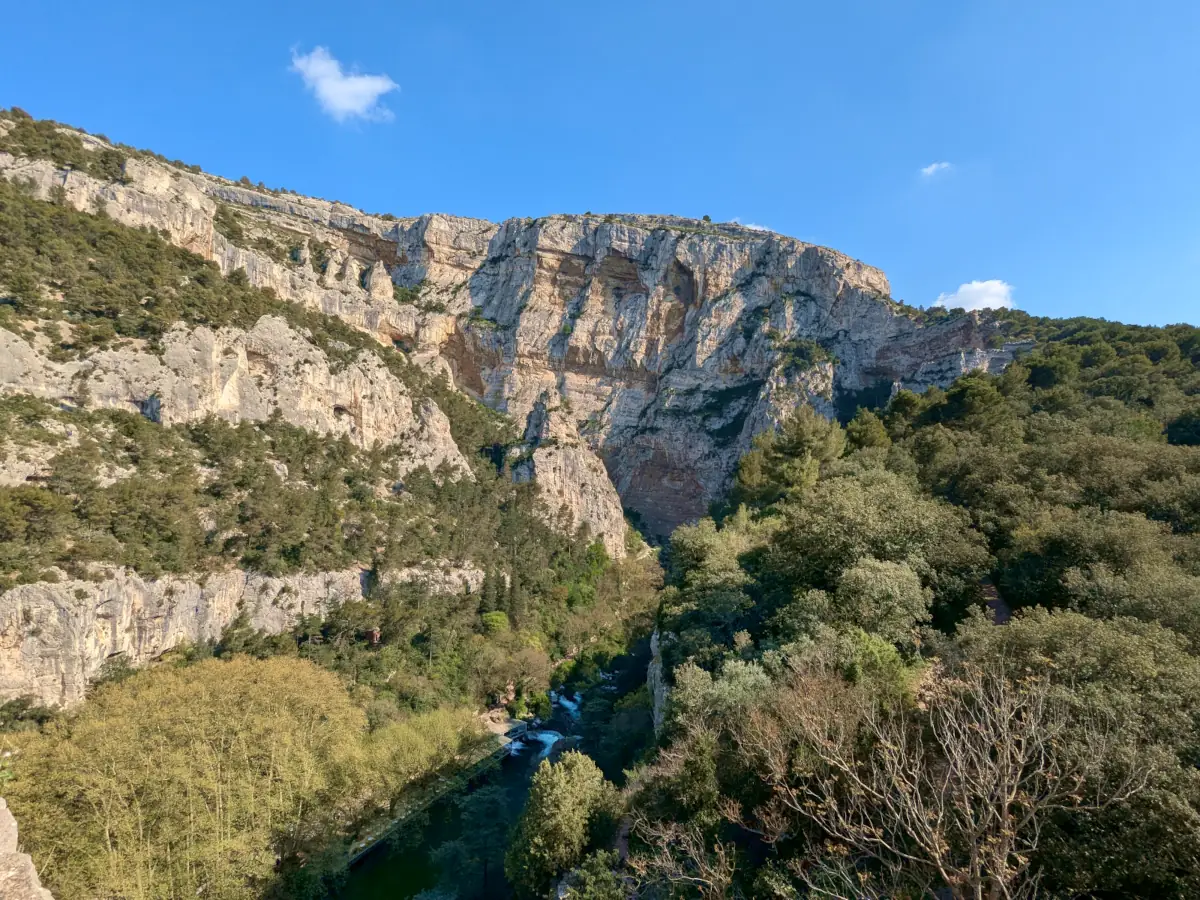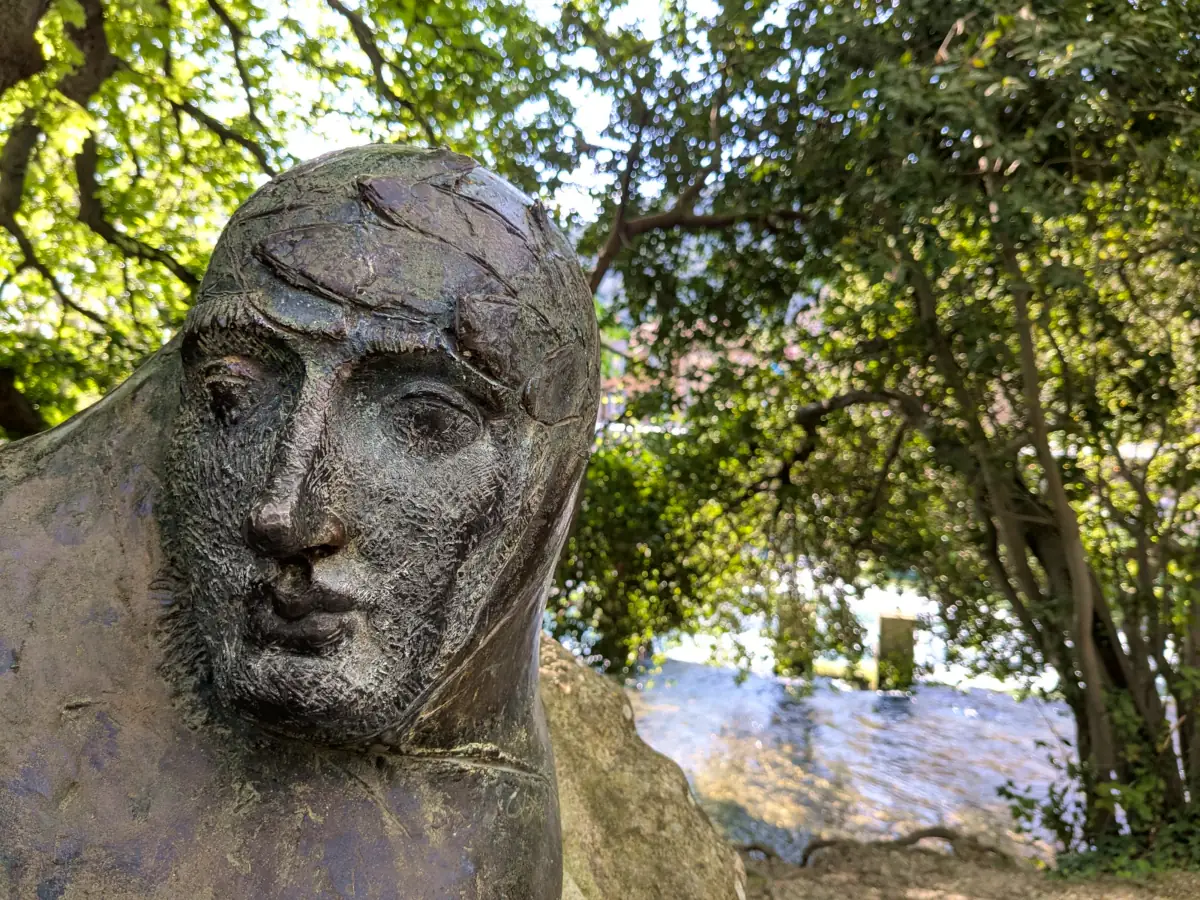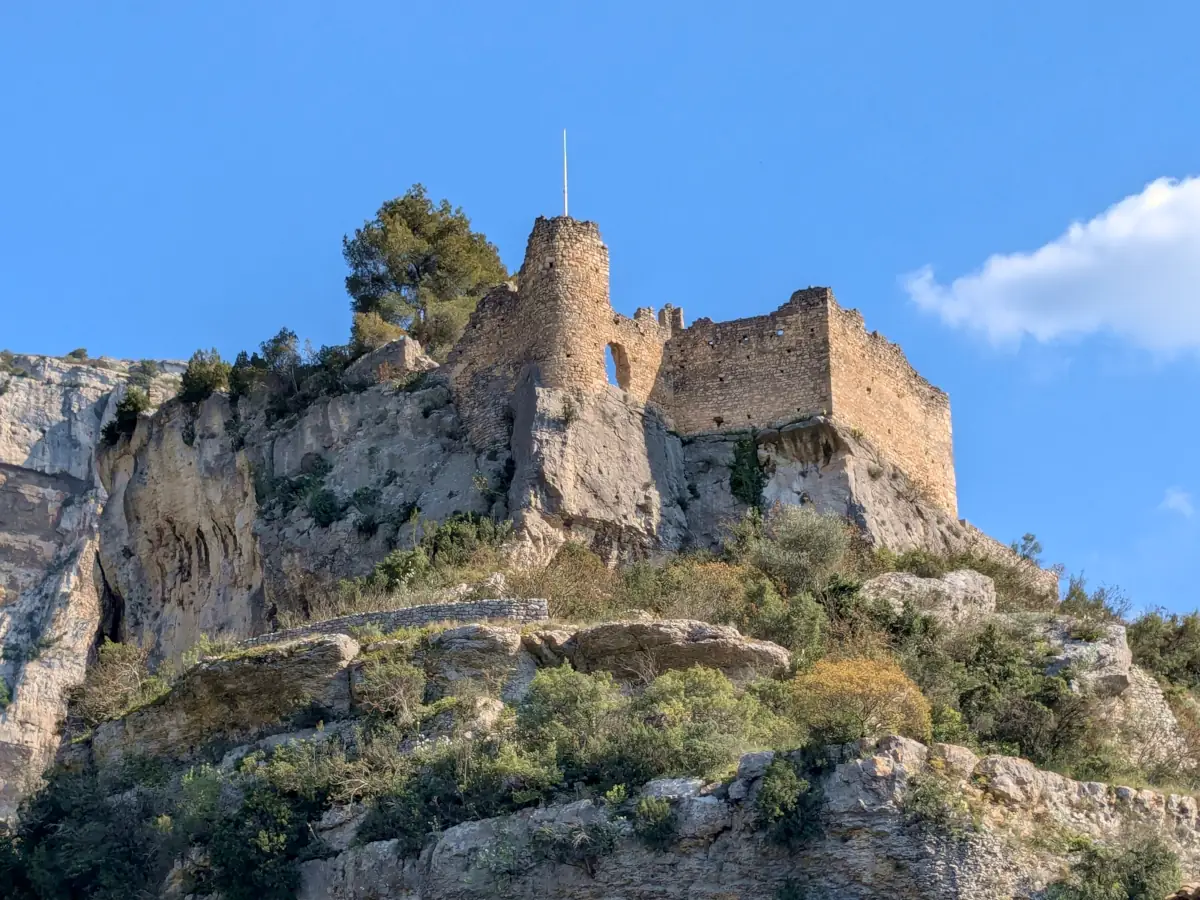In the footsteps of Petrarch in Fontaine-de-Vaucluse
The remnants of a medieval fortress tower above Fontaine-de-Vaucluse. Anchored in the rock, its ruins blend seamlessly with the vertical cliffs of limestone that encircle the chasm of Vallis Clausa — the “closed valley.”

The Summer Residence of the Bishops of Cavaillon
The Château des Évêques of Cavaillon is also known as the Château de Vaucluse, or Petrarch’s Castle. Built in the 13th century upon the remains of an earlier 11th-century structure, it served as the summer residence of the bishops of Cavaillon, lords of the land. Perched atop a rocky promontory, it overlooks the spring of the Sorgue, offering breathtaking views of the village below and the surrounding countryside.

Petrarch and Philippe de Cabassole
The Château de Vaucluse was the retreat of Philippe de Cabassole, Bishop of Cavaillon and close friend of Petrarch (1304–1374). The Italian poet, the first of the humanists, fled the tumult of the Papal Court in Avignon and found in Fontaine-de-Vaucluse, under his friend’s protection, in a house near the river, both peace and inspiration. There, he composed some of his most beautiful works, including the celebrated Canzoniere, a tribute to his platonic love for Laura de Noves.
Petrarch’s house was burned and destroyed by looters a few years after his departure, amid the turmoil of the Great Plague and the Hundred Years’ War. On what is believed to be its former site, a museum now stands as a memorial to the poet and the father of humanism, as well as to the poet René Char. The museum also displays a collection of ancient coins recovered from the chasm of Fontaine-de-Vaucluse — offerings cast to the deities of the spring over the centuries.

Ruins Echoing with Memory
With the upheavals of the late Middle Ages and the waning influence of the Bishops of Cavaillon, the château gradually lost its residential and defensive role. From the 15th century onward, it was abandoned to the elements, its stones at times reused in the buildings of the village below. Today, its silent ruins still watch over the valley — remnants of a flourishing medieval era, forever etched into the memory of Fontaine-de-Vaucluse and the history of literature.
Reaching the Château

From Petrarch’s House, near the bridge over the Sorgue, a stairway winds between the houses, leading to a steep path up the hill. Along the ascent, superb views open onto the valley and the village. The path, traced through outcrops of rock smoothed by time, calls for sturdy shoes, a touch of caution, and a steady breath — but the reward at the summit is well worth it. The site is only partially secured, with some sections perched on the edge of the cliff.
Find a Guest House near Fontaine-de-Vaucluse
Less accessible than the Sorgue Valley, the walk to the Château des Évêques is the perfect complement to discovering this place steeped in poetry and history.



